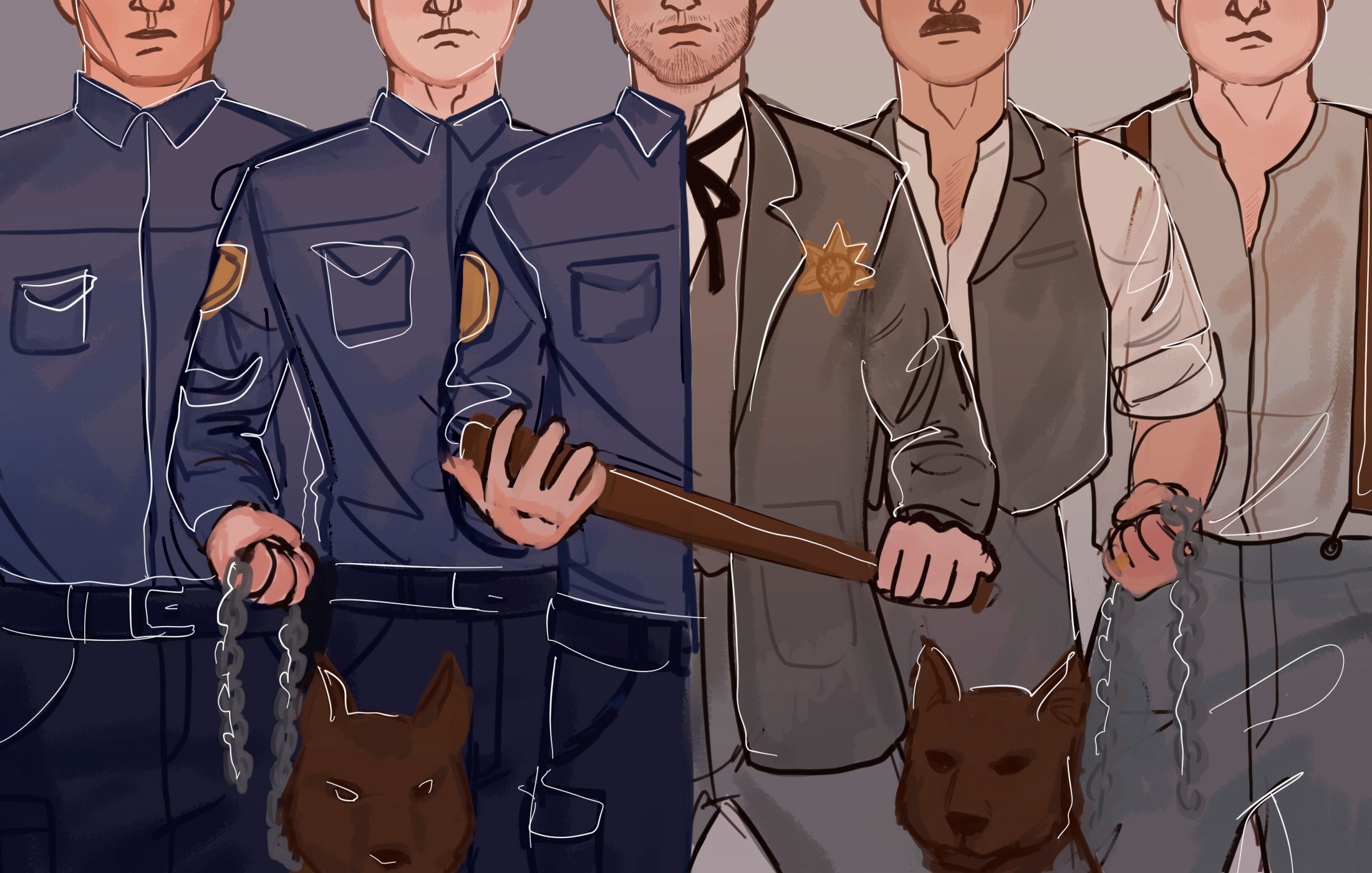Last April, Walter Scott, a Black man, fled from white police officer Michael Slager through an abandoned lot on Rivers Avenue in North Charleston, South Carolina. Slager chased Scott and shot him eight times, killing him. Like many Black Americans before him, Scott was chased and killed by a legal entity supposedly sworn to serve and protect. Scott’s murder – which took place roughly 11 miles from the location of an 18th century slave auction gallery – is one of many that tug at the deep roots of violent and racist policing in the U.S.. It traces back to the era of slave patrols – an era when groups of armed white men on horseback enforced a system of surveillance, terror, and racial control over enslaved people. Policing today retains striking similarities to the slave patrol era.
326 years before the murder of Scott, the South Carolina slave code of 1690 gave birth to the slave patrol. Grounded in what legal historian Sally Hadden refers to as “an unequivocal manifestation of white fear” that enslaved people would revolt at any moment, the slave patrol was one of the first formal state institutions in slave societies around the Atlantic. Patrols roamed country roads and plantations by night, looking for potential fugitive slaves and searching the living quarters of enslaved people for contraband goods like liquor or books.
Crucial to the slave patrol enterprise was the pass system. Patrollers, or “paddyrollers” as termed by enslaved people, had the power to stop and question a slave for any reason, especially if the latter was travelling without a white person accompanying them. A pass document signed by a master or overseer typically indicated the enslaved person’s business and provided safe passage. Though the pass system was at times subverted by literate slaves who could forge their own passes, it ultimately represented complete control over the bodies and mobility of the vast majority of enslaved people.
Although the physical policing of enslaved bodies was integral to upholding slavery, the deep psychological effect of slave patrols played an additional role. Slave patrols travelled on horseback, and were thus physically placed above eye level. They represented an omnipresent force with sweeping authority conferred by law, which allowed for extensive searches of the person and personal spaces. The darkness of the night took on new meaning as the potential threat of danger was always present anywhere beyond the plantation. In this way, the power of slave patrols exerted itself even in spaces where they were not present.
“Policing in [the U.S.] has always had the dual purpose of maintaining social order and enforcing the racial hierarchy.”
Journalist Salim Muwakkil writes that “policing in [the U.S.] has always had the dual purpose of maintaining social order and enforcing the racial hierarchy.” Muwakkil’s analysis of policing can also be extended to other contexts. For instance, a pass system in Western Canada, put into place in 1885 and lasting for sixty years, confined Indigenous people to reserves, with the goal of stifling access to urban areas and communication with other Indigenous communities. Indigenous people were required to have a pass indicating the reason and duration of the person’s absence approved by the colonial Indian agent on the reserve.
Decades later, racist discriminatory policing is alive and well in major Canadian cities. The practice of carding is a hallmark of Toronto police, whereby individuals, primarily of colour, are stopped and questioned on the street, without charge, and asked for identification that is then entered into a database. The racist policing of the Service de police de la Ville de Montréal (SPVM) is also well documented. An internal SPVM report compiled by criminologist Mathieu Charest in the wake of the 2008 police murder of teenager Freddy Villanueva in Montreal North, outlined the extent to which racism was entrenched within the Montreal police. Among incidents cited in the report are officers telling people of colour to “go back to your country,” or even that “we prefer to be colonizers than slaves.”
In the U.S., police brutality is rampant. The recent deaths of Eric Garner, Tamir Rice, Michael Brown, Sandra Bland, and so many others are only a fraction of a long line of police murders in the country’s past.
Slave patrols not only perpetuated white supremacy, but functioned more specifically to protect the economic interests of the propertied elite, which was then the slaveholding class. Police today continue to brutally carry out the latter role in addition to the former. In Montreal, police consistently use excessive force against explicitly anti-capitalist demonstrators who threaten the current economic system, for instance during protests against tuition hikes or austerity policies, as well as during the city’s yearly marches against police brutality.
What are we to do with this understanding of law enforcement’s past? History does not prescribe a course of action to take, but what is clear is that when state entities are granted vast authority to profile, surveil, and inflict violence upon certain groups of people, a dangerous structural power imbalance is created. It is an imbalance that is difficult to overcome despite the most thorough forms of oversight and accountability. All this is aggravated by the fact that police forces in both Canada and the United States are becoming increasingly militarized with sophisticated weaponry and equipment despite dropping crime rates. As we move forward, an awareness of the police’s past can help us move toward a better understanding of what their future role should be instead.
Shadows of Slavery is a column that seeks to remember the history of slavery in the Americas and to examine how this history manifests itself today. Nadir Khan can be reached at shadowsofslavery@mcgilldaily.com.

